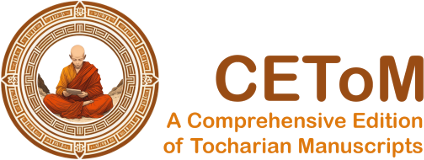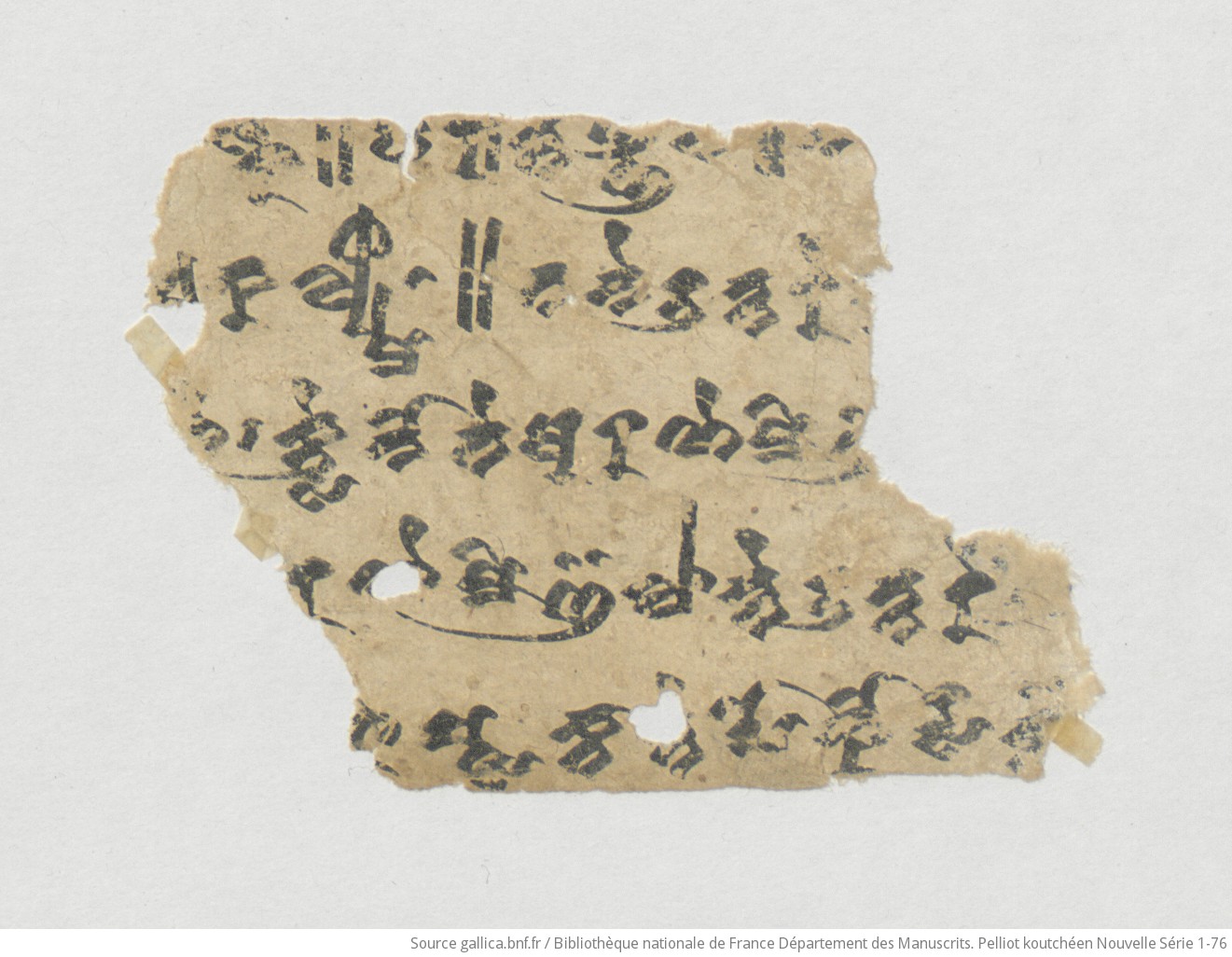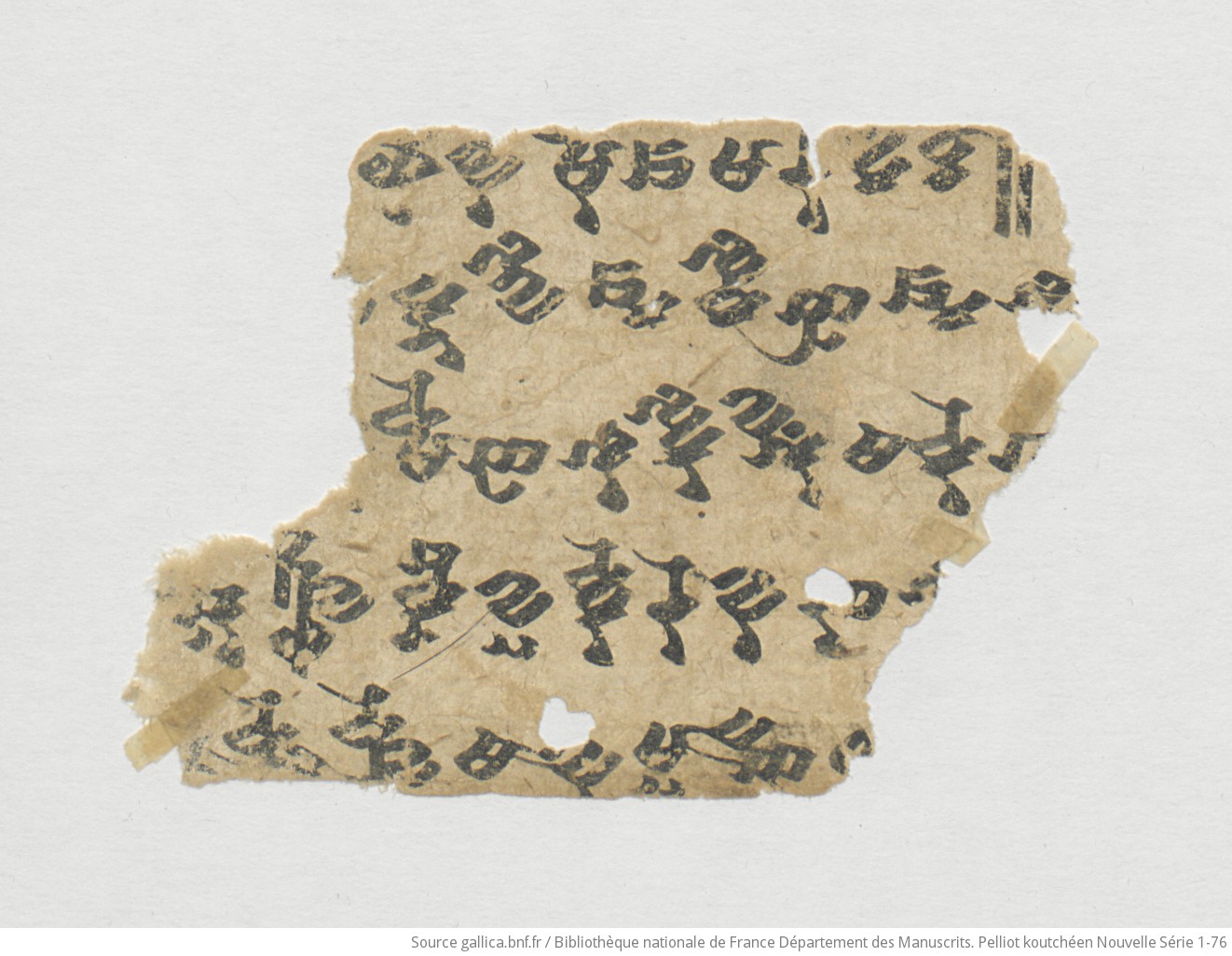Work in progress
PK NS 36A
| Known as: | PK NS 36A; Pelliot Koutchéen Nouvelle Série 36a |
|---|
| Cite this page as: | Georges-Jean Pinault; Melanie Malzahn (collaborator). "PK NS 36A". In A Comprehensive Edition of Tocharian Manuscripts (CEToM). Created and maintained by Melanie Malzahn, Martin Braun, Hannes A. Fellner, and Bernhard Koller. https://cetom.univie.ac.at/?m-pkns36a (accessed 09 Jul. 2025). |
|---|
Edition |
| Editor: | Georges-Jean Pinault; Melanie Malzahn (collaborator) |
|---|
| Date of online publication: | 2012-08 |
|---|
Provenience |
| Main find spot: | Duldur-akur |
|---|
| Expedition code: | 46(1).5 |
|---|
| Collection: | Bibliothèque nationale de France, fonds Pelliot Koutchéen (Paris) |
|---|
Language and Script |
| Language: | TB |
|---|
| Linguistic stage: | classical |
|---|
| Script: | classical |
|---|
Text contents |
| Title of the work: | Araṇemijātaka |
|---|
| Text genre: | Literary |
|---|
| Text subgenre: | Jātaka/Avadāna |
|---|
| Verse/Prose: | prose; verse |
|---|
Object |
| Material: |
ink
on paper |
|---|
| Form: | Poṭhī |
|---|
| Size (h × w): | 6.1 × 8.5 cm |
|---|
| Number of lines: | 5 |
|---|
| Interline spacing: | 1.2 cm |
|---|
Images
Transliteration
| a1 | /// sk(·) || ka ry(·) [r]tt(·) ññ(·) n(·) || t(·) /// |
|---|
| a2 | /// e ka lymi 1 || ta ne u tta re – /// |
|---|
| a3 | /// [ñe] : kuse no te a ra ṇe mi¯ ¯[ñä] /// |
|---|
| a4 | /// ra ṇe mi¯ ¯ñä lā nte u tta reṃ – /// |
|---|
| a5 | /// rā ṣtsa ktā(·) te po ko rsa k[w]ä /// |
|---|
| b1 | /// [c](·) yn[e]¯ ¯śä w[e] slk[ā] [s]k(·)¯ ¯[m] /// |
|---|
| b2 | /// (·)[s](·) ye we re tke wä rkṣa lyci ṣeṃ /// |
|---|
| b3 | /// [p](·) ke sa swe ntse se yi śka /// |
|---|
| b4 | /// (·)s(·) nma yo ktsa nma wsa rne – /// |
|---|
| b5 | /// || u tta re śa ma ś[k]e we s̝[s̝]aṃ /// |
|---|
Transcription
Translation
| a1 | ... (they) sa(y): || In [the tune] käryorttaññe || Then ... |
|---|
| a2 | ... in the power of ... 1. Then Uttara ... |
|---|
| a3 | ... But what then [is] (the son?) of Araṇemi ... |
|---|
| a4 | ... of the king Araṇemi, Uttara ... |
|---|
| a5 | ... they spread dust over [their] head[s], [and] (they lamented?) out of the whole throat ... |
|---|
| b1 | ... we for sure see you face to face. ... |
|---|
| b2 | ... (having?) sword [and] army they were powerful ... |
|---|
| b3 | ... the share of the lord [and] of the son also ... |
|---|
| b4 | ... they gave him food [and] drink ... |
|---|
| b5 | ... Uttara the boy says: ... |
|---|
Other
| a5 | Sie streuten s i c h Staub aufs Haupt. (Schmidt 1974: 353) |
|---|
Commentary
Philological commentary
| * | This episode is probably about the encounter of people helping prince Uttara in the forest after he had been tormented by the Brahmins. Since the lament of these people can in theory precede the act of helping or can follow the tale of the prince, it remains unclear which is the recto and verso side. |
|---|
| n1 | Couvreur 1964 hesitates between kw and tw; an autopsy of the original confirms k. To be sure, there is not much left of the lower sign, but there are not too many possibilities for a sign carrying the double dots, and the remains exclude 〈ca〉, 〈ña〉, and 〈ya〉. Since the preceeding situation refers to a gesture of grief (no doubt on behalf of prince Uttara), it is likely that we have the beginning of a form from the verb kwäsā- "to lament", probably the 3.pl.mid. Pt I kwäsānte (the preterite is not attested yet, but can be easily reconstructed). |
|---|
| n2 | yewe no doubt stands for yepe "sword, knife", since it is coordinated with retke "army". Pace Adams 1999: 579 it is more likely that yewe and retke are oblique forms rather than nominatives and subject of the sentence, because these items are powerful per se. |
|---|
| n3 | Pace Couvreur, one cannot restore (ap)pake "dear father", because the 〈pa〉 is a single sign and the diminutive suffix has normally a geminate. |
|---|
Remarks
References
other
Couvreur 1964: 247-48
Translations
Schmidt 1974: a5 (353)
Bibliography
Adams 1999
Adams, Douglas Q. 1999. A dictionary of Tocharian B. Leiden Studies in Indo-European 10. Amsterdam/New York: Rodopi.
Couvreur 1964
Couvreur, Walter. 1964. “Nieuwe Koetsjische fragmenten van het Araṇemijātaka.” Orientalia Gandensia 1: 237–249 + I.
Schmidt 1974
Schmidt, Klaus T. 1974. “Die Gebrauchsweisen des Mediums im Tocharischen.” PhD, Universität Göttingen.




